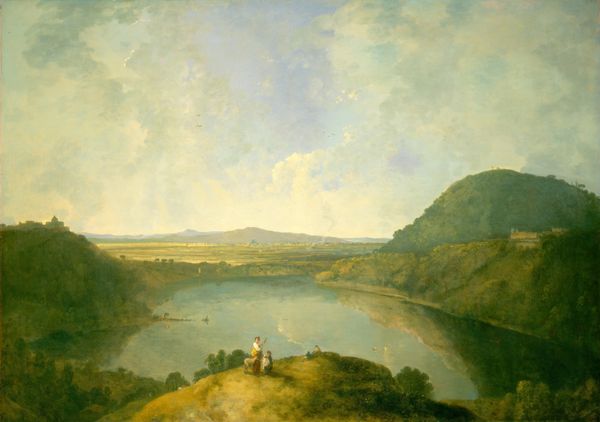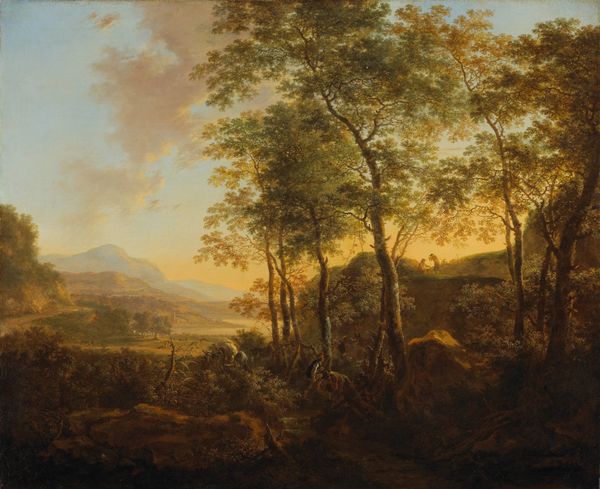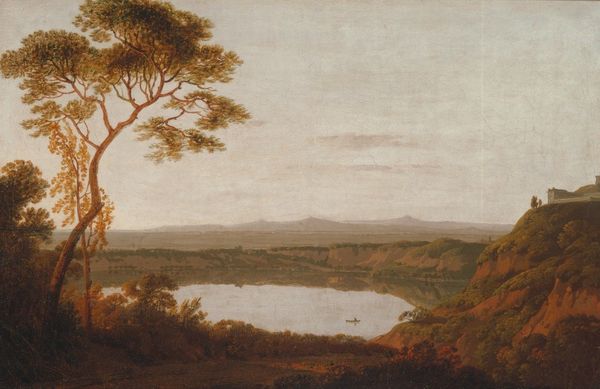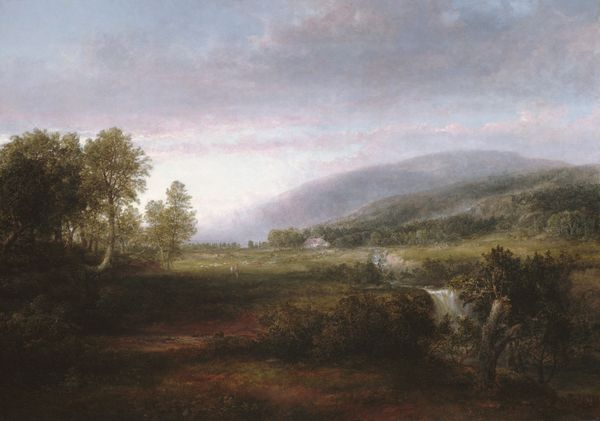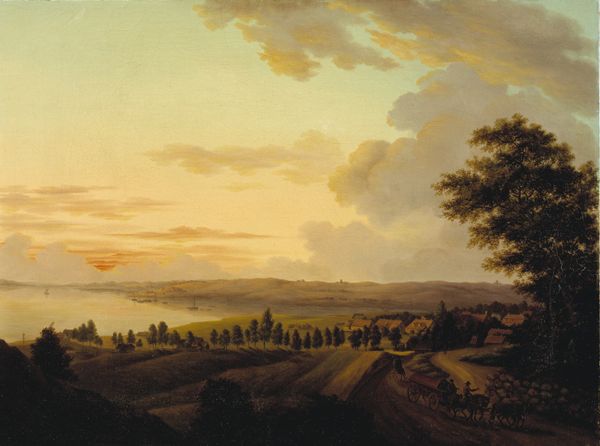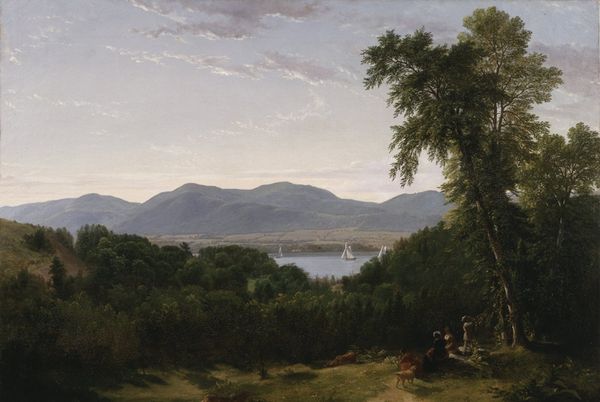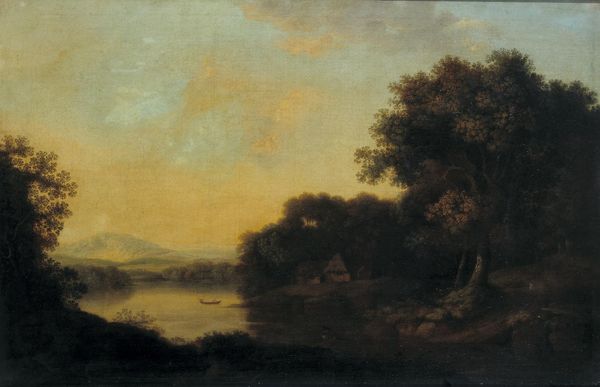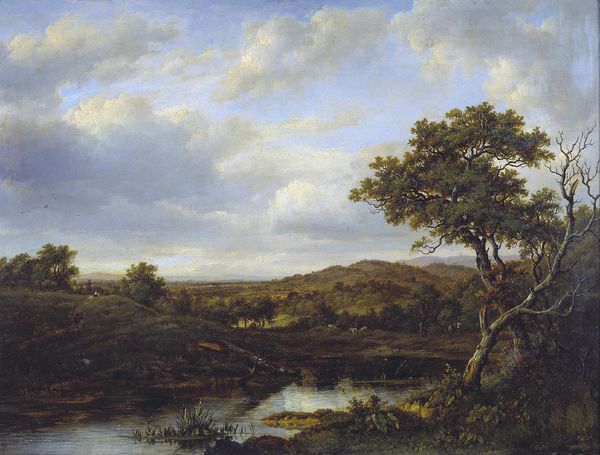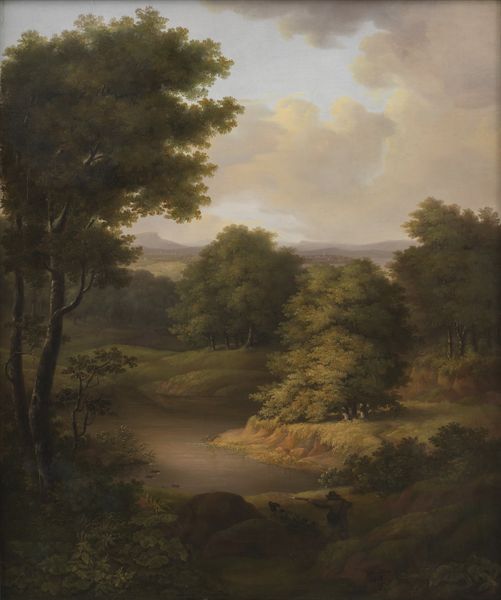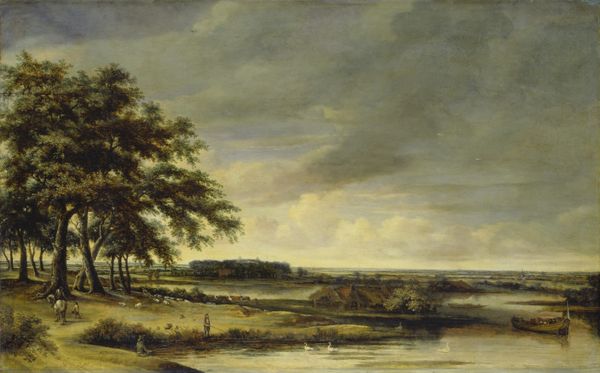
plein-air, oil-paint
#
plein-air
#
oil-paint
#
landscape
#
river
#
figuration
#
oil painting
#
romanticism
#
mountain
#
hudson-river-school
#
cityscape
#
realism
Dimensions: 14 3/4 x 21 1/2 in. (37.5 x 54.6 cm)
Copyright: Public Domain
Curator: Standing before us is "On the Hudson," an oil-on-canvas work by Thomas Doughty, painted sometime between 1830 and 1835. It provides a classic view of the Hudson River, a location that would become iconic for the burgeoning Hudson River School of landscape painters. Editor: It's serene, isn’t it? A sort of gentle quiet emanates from the arrangement of colors, a subtle orchestration of browns, greens, and the opalescent greys of the sky. The composition is masterful, subtly guiding the eye. Curator: Absolutely. The location, the Hudson River, wasn't merely picturesque, it held powerful symbolic weight. As the young United States searched for its cultural identity, it turned to its landscapes, and in the process of depicting them created unique symbols of the nation itself. Doughty’s art was consumed by audiences eager to celebrate this American landscape. Editor: The way he handles light is striking. Notice how the darker foreground gives way to brighter, more diffuse light on the river. And how it uses the contrast to define a near-to-far recession into space? The layering of forms feels considered, almost architecturally organized. Curator: Doughty worked often "en plein air," an interesting approach for the period. While studio work was important, artists valued experiencing the immediate setting, seeking to translate the light and ambiance of the locale to their art. We should also remember the painting circulated within specific art-market settings of New York City—shaping its understanding. Editor: Looking closely at that tiny figure, the single individual on the path—that really adds a powerful element to the picture's narrative. We seem to be invited to compare his scale with the monumental vista; his inclusion creates both a physical and psychic depth to this grand theatre of light. Curator: The placement and presence of such figures were common amongst Hudson River School artists—the figures offered both scale and narrative potential to those viewers then. Through art patronage, national organizations like the American Art-Union used art and publications to champion a vision of national unity linked to landscapes like these. Editor: It makes one contemplate how our experience and construction of visual space affect our sense of self, or nation. It seems Doughty intuitively tapped into some deep reservoir within the cultural psyche. Curator: The painting’s narrative, so intimately bound with cultural currents of the era, tells a detailed story of its moment, its place in the emergence of the United States of America and its identity-making potential. Editor: A beautifully articulated synthesis of form and feeling. One leaves it somehow feeling lighter, calmer.
Comments
No comments
Be the first to comment and join the conversation on the ultimate creative platform.

